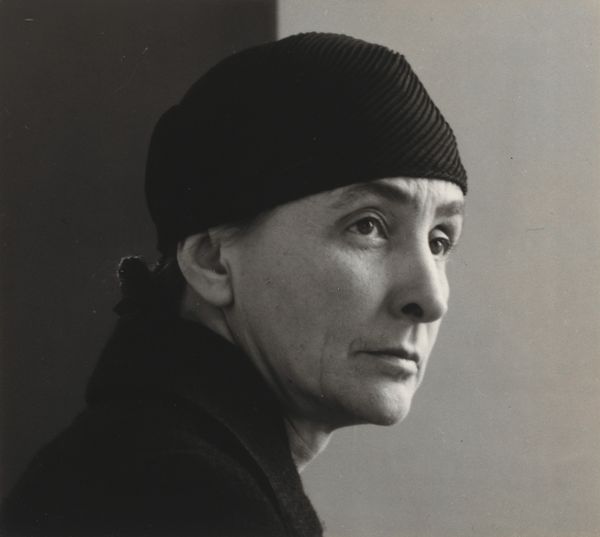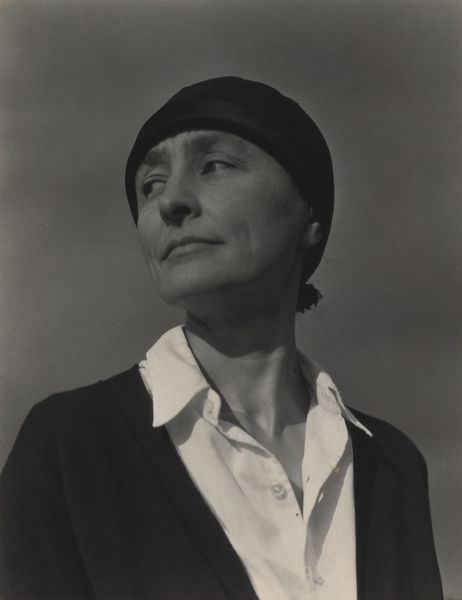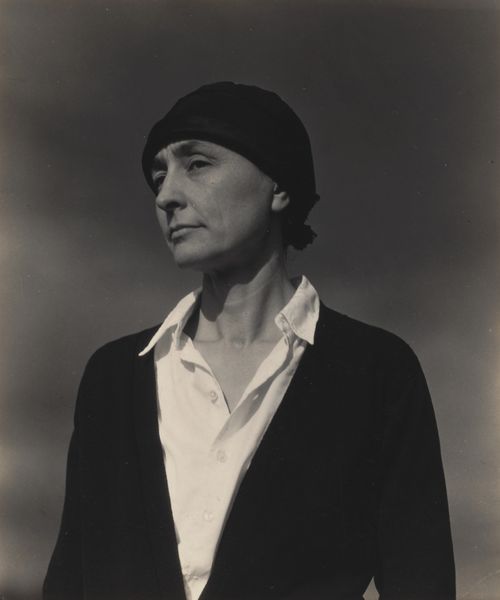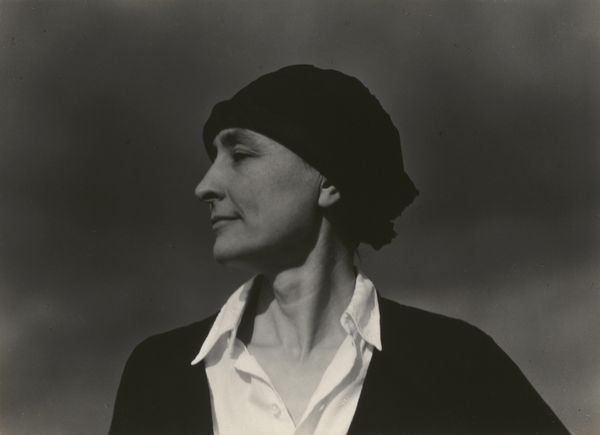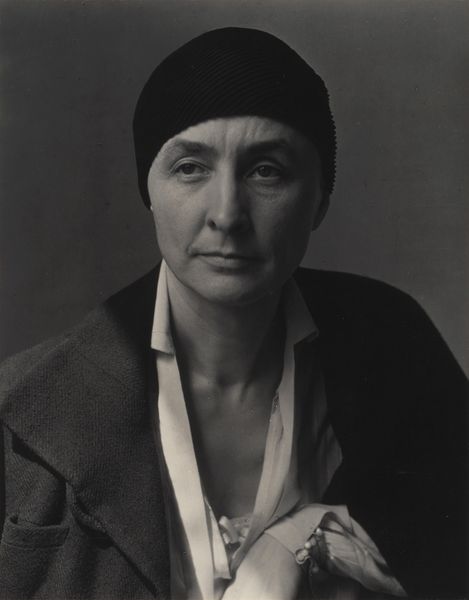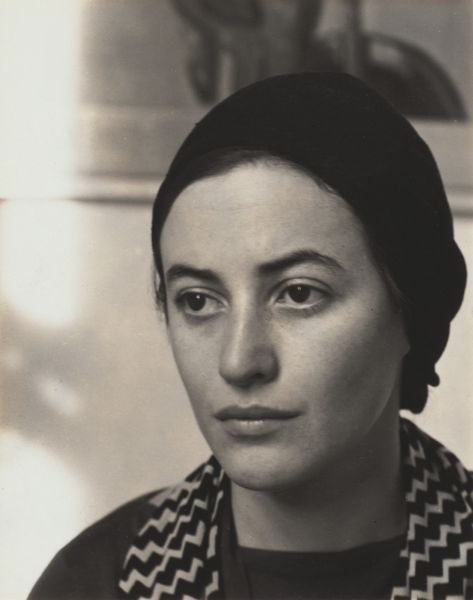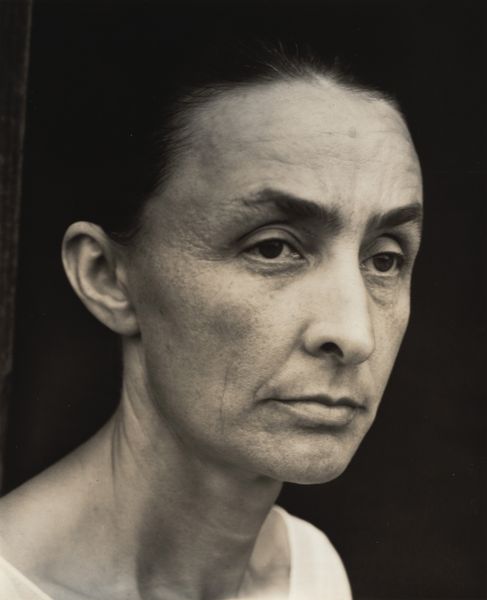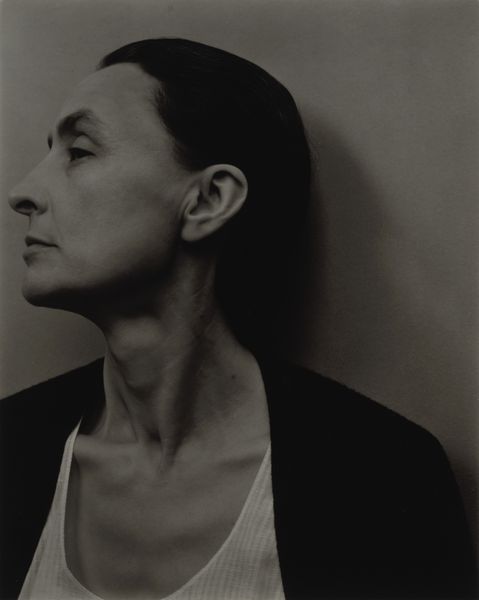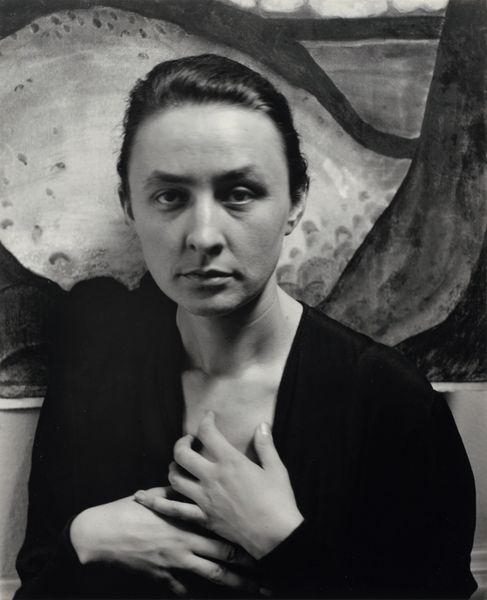
photography, gelatin-silver-print
#
portrait
#
low key portrait
#
portrait
#
photography
#
gelatin-silver-print
#
modernism
#
realism
Dimensions: sheet (trimmed to image): 24 × 19.2 cm (9 7/16 × 7 9/16 in.) mount: 50.7 x 38.7 cm (19 15/16 x 15 1/4 in.)
Copyright: National Gallery of Art: CC0 1.0
Curator: Here we have Alfred Stieglitz's photographic portrait of Georgia O'Keeffe, created between 1930 and 1931, using the gelatin-silver print process. Editor: My initial impression is of quiet strength, you know? The somber monochrome, the cityscape out the window—it all feels like a carefully constructed stage for O’Keeffe’s intense gaze. Curator: Absolutely, and considering Stieglitz’s standing in the photography world, he wouldn’t simply snap away! But thinking of gelatin-silver prints makes me wonder, what was the labor like? So many hands touching the print as it moved through various solutions. How was the work divided within his studio? Were there assistants, apprentices involved in production? Editor: Good questions. For me though, this is Stieglitz capturing not just O'Keeffe's likeness, but the essence of their complicated relationship. It's not overtly romantic, but intensely intimate. Those eyes feel like they're seeing right through you, which in a way, they probably were. He immortalized her as an American icon, in a distinctly modernist fashion, right? Curator: Yes! It's fascinating how Stieglitz’s portraits also act as documents of O’Keeffe's own self-fashioning. That simple black hat, the polka dots - they hint at a considered personal style, even against the backdrop of 1930s manufacturing. It's not a 'posed' portrait in the traditional sense. The materials too. The gelatin-silver gives such tonal range—such richness. Editor: And I think you've hit the key! This isn't about 'manufacturing' her image but uncovering the genuine O’Keeffe. And while the processes may appear industrial, it comes off so soft... personal. Her spirit! That window background! Curator: True, Stieglitz makes the photographic process disappear. He uses it with the tonal range, which speaks volumes of their partnership and how technology became integral in art at the time. This reminds me also how O'Keeffe took pictures with Paul Strand - so how did the gelatin process fit in both of these different artistic and intimate pairings? Editor: Right, questions to unpack forever, perhaps. It is so moving to consider not just the work in front of us but what it does to make us dream of possibilities.
Comments
No comments
Be the first to comment and join the conversation on the ultimate creative platform.
